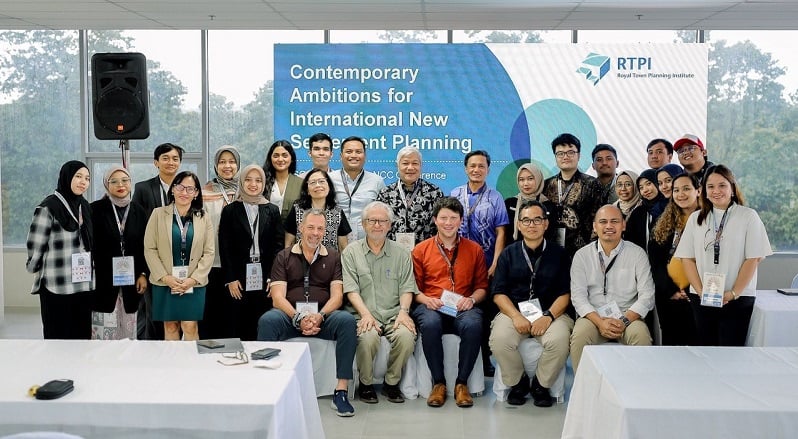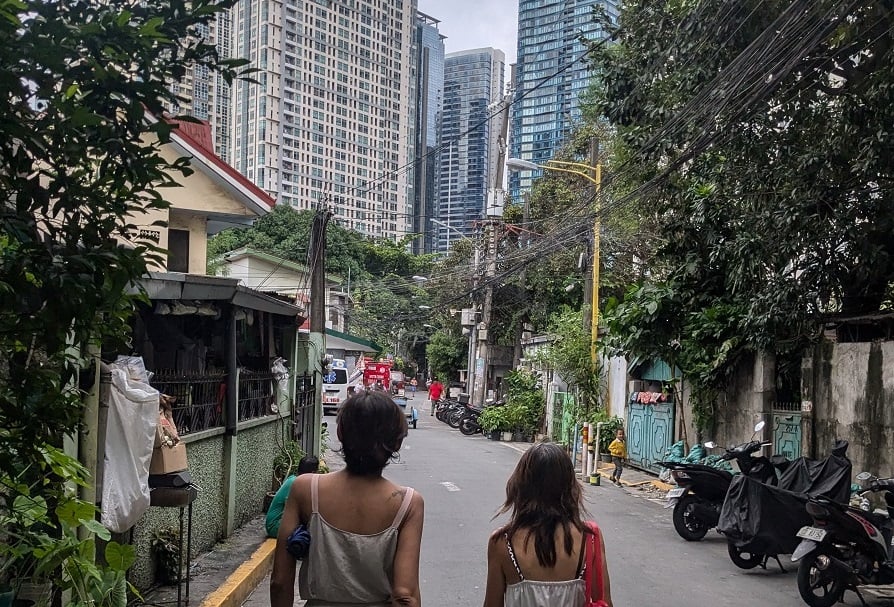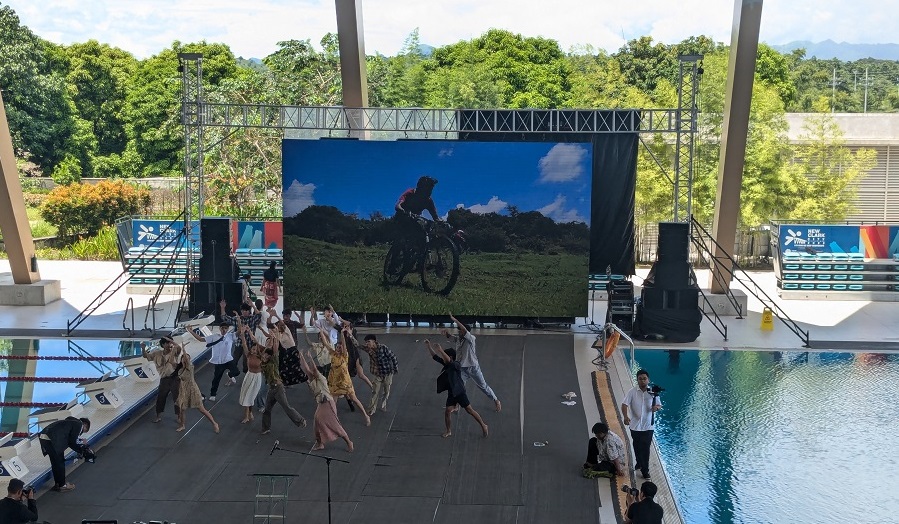Dr David Mountain is Research Manager at the RTPI
September 2024 saw the first ‘Conference for New Cites’ hosted by the International Society of City and Regional Planners (ISOCARP), which coincides with the organisation’s 60th birthday. It was hosted at New Clark City in Tarlac Province, the Philippines, around 2 hours north of Manila. At the conference I convened an informal in-person special RTPI session, ‘Contemporary Ambitions for International New Settlement Planning.’ At the session we announced our upcoming comparative research project on new settlement planning in international contexts.
By the 1970s, Britain’s post-war new towns were becoming unfashionable in public policy and the programme was curtailed. At the same time, they were becoming world-renowned as good planning practice. In 2024, a new national government is investigating options for future new town planning in Britain, and it’s important we understand how practice and ambition of new settlement planning has been evolving overseas since the 1970s and into the present day. The research ambition is to investigate learning and practice from different countries around the world including in the global south. The visit was my first proper engagement with planning in a developing economy context, and itself lent a valuable learning opportunity.

The RTPI special session at the conference ©ISCOCARP
The Philippines is a country of stark contrasts: huge apartment complexes with uncountable stories abut informal housing next to polluted rivers. The second tier city I stayed in, Angeles, has an eerily vibrant neon-lit nightlife, including at 3am on the Tuesday morning I arrived. Former air-bases contain upmarket hotels and golf courses, and are surrounded by tall gates where police control access. The gates are always bustling with street vendors outside. Roads are populated by tricycles (motorbike taxis with a partially-enclosed sidecar) and noisy Jeepnies (converted American jeeps like stretch-limos with open windows for public transport). Schedules are relatively fluid and open to negotiation, whether due to traffic or unexpected social encounters.
New Clark City, initially known as Clark Green City prior to the current president’s tenure, was first planned in 2012 and the current structures built for the 2019 Southeast Asian Games. The vision is bold but the project appears to have slowed. It comprises a high-quality athletics stadium and aquatics centre, an empty office building and a small area of apartments. Responsibility for planning in the Philippines spans local, regional and national government. Other actors are also significant; the landowner and promoter of New Clark City is the Bases Conversion and Development Authority – a national agency tasked with the reuse of the colonial American bases which closed in 1992. The key success story of the Bases Conversation and Development Authority is Bonifacio Global City in Manila, a very large business district within the Metro Manila area.

Looking towards Bonifacio Global City ©David Mountain
Subsequent development of New Clark City was adversely affected by the pandemic and its impact on the economy, but New Clark City is reportedly the backup location for national government were disaster to strike Manila. The Philippines is a country with a high risk of natural disaster, with the 1991 eruption of Mount Pinatubo having a particularly terrible impact – the horror of this event was referenced in an extraordinary set of dance routines by local schoolchildren as part of the opening ceremony on the swimming pool boardwalk. With much of the wider region of south-east Asia looking to develop and grow within an uncertain future of rising sea levels, ambitious spatial planning is a necessary endeavour which needs acceleration.

Local pupils dance at the opening ceremony ©David Mountain
One of the running topics of discussion was how to initiate self-generating economic development within planned settlements: it is one thing to build a set of buildings, and another thing to facilitate the flourishing of a new community. There is a serious risk that ‘new city’ can in effect mean large-scale gated community, and that existing rural residents are seen as an obstacle rather than as partners. For keynote speaker Guy Perry, gating and real estate security are the enemy of good urbanism, and the relative porousness of Bonifacio Global City to its surrounding neighbourhoods is a success. For Dushko Bogunovich, high-density urbanism is inflexible and results in the recurrence of exclusionary dynamics. Bogunovich provided a particularly valuable ideological anchor for regenerative urbanism (a conference theme) as ecological, decentralised, and low density, and as the only option for an increasingly disaster-prone planet.

New Clark City Aquatics Center ©David Mountain
Adjacent to the New City was a community which was laid out to rehouse victims of the volcano eruption. While European visitors saw vibrancy and conviviality there, our host government officials saw underdevelopment. The official vision for progress was embodied in the architect of New Clark City’s stadium, Royal Pineda, who spoke of his mission to forge a new national architectural philosophy out of the synthesis of nature (described as peaceful) and modernity. Although pastiche, Pineda’s confidence and flair reflects the potential for design to consolidate national political ambition in physical form. I had wonderfully stimulating conversations with conference delegates, many of whom were working in the blossoming digital planning space.
As someone with little knowledge of development studies or of planning in the Global South, the trip and conversations were hugely educational, and revealed a complex set of issues spanning different domains of knowledge and practice. Crucial tensions around economic growth, social inequality, ecology, public health, land and democratic participation felt pressingly close to the surface. These tensions were omnipresent within the buildings we sat in, as participants reflected on the role of theory in relation to practice, research in relation to commerce, planning and politics. Thanks to ISOCARP and in particular to the conference’s General Rapporteur Dr Hendricus Andy Simarmata, President of the Indonesian Association of Urban and Regional Planners, for pulling off such an achievement.
Keep up-to-date with our International Activities on our LinkedIn page.


